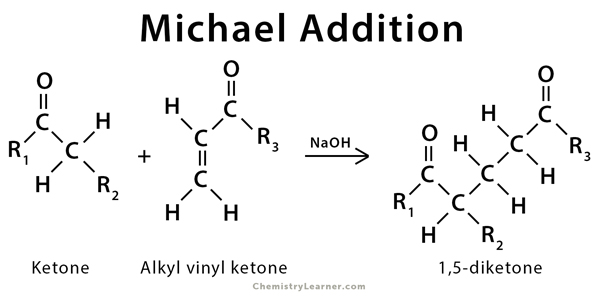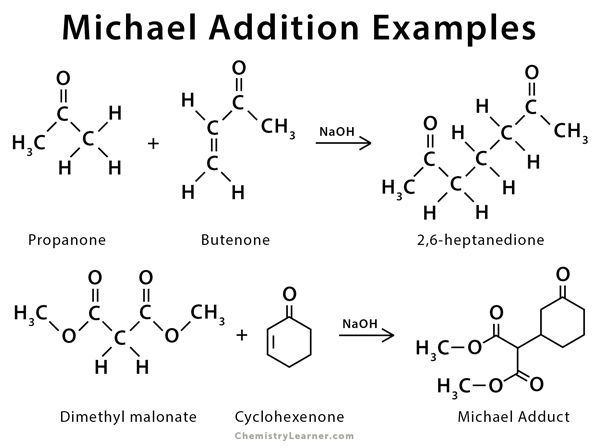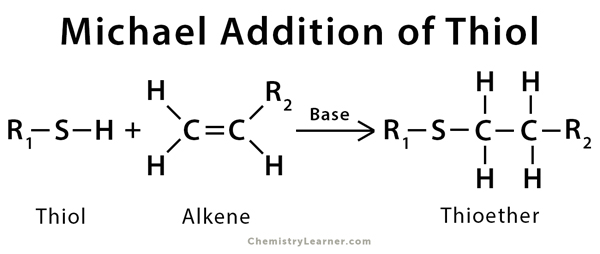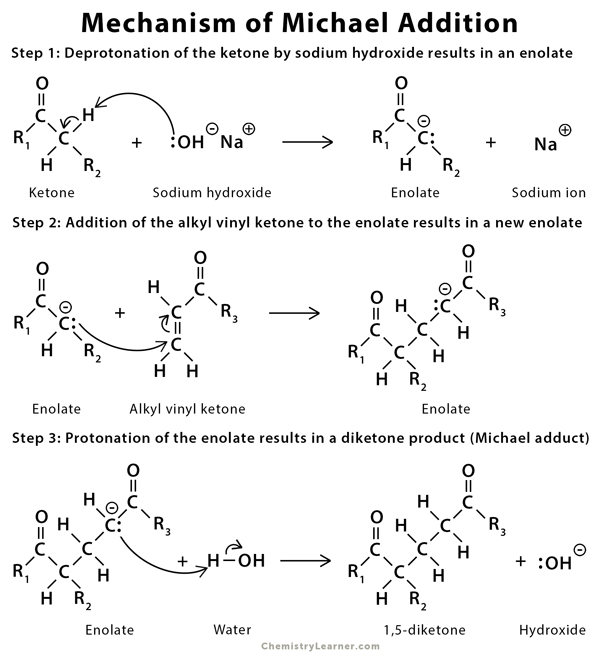Home / Organic Chemistry / Michael Addition
Michael Addition
Table Of Contents
Definition: What is Michael Addition?
Michael addition, also known as the Michael reaction, is one of the most well-known reactions in organic synthesis. It is a nucleophilic addition reaction. It is immensely useful for the formation of a carbon-carbon bond when a carbon nucleophile adds to an α, β-unsaturated carbonyl compound through a 1,4-addition mechanism. The product formed in the Michael addition reaction is called Michael adduct [1-4].
The history of this reaction goes back to 1887 when Arthur Michael of Tufts University first synthesized a product through this procedure.
Examples of Michael Addition [5]
Mechanism of Michael Addition [4-8]
Applications of Michael Addition
Michael addition is widely used to synthesize all kinds of natural products, drugs, and complex compounds with biological activities [9].
- References
- Definition – Polymerdatabase.com
- Definition – Chemistryworld.com
- Definition – Chem.ucla.edu
- Definition and mechanism – Byjus.com
- Mechanism – Masterorganicchemistry.com
- Mechanism – Chem.ucalgary.ca
- Mechanism – Organic-chemistry.org
- Mechanism – Name-reaction.com
- Applications – Eurekaselect.com









It good continue